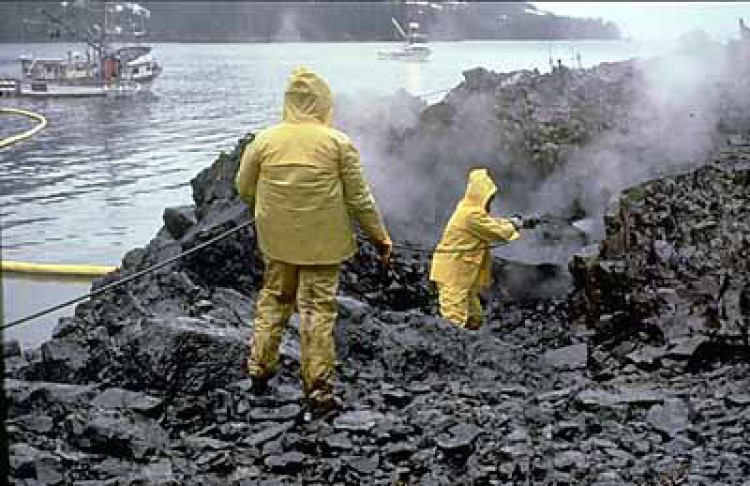
First tests and applications of microbials to combat oil spills were conducted
In 1990, the first tests and applications of microbials to combat oil spills were used with the Exxon tanker Valdez. Much of the oil washed onto the shorelines of islands in the path of the oil, making shoreline cleanup the primary focus. During the Exxon Valdez spill water washing and bioremediation (biostimulation using fertilizers containing N nutrients) were the major strategies.
Because petroleum hydrocarbons occur naturally in all marine environments, there has been time for numerous diverse microorganisms to evolve the capability of utilizing hydrocarbons as sources of carbon and energy for growth. These oil degrading indigenous microorganisms played a significant role in reducing the overall environmental impact of the Exxon Valdez spill.
The oil residue remaining in the shorelines was left to naturally biodegrade further although based upon previous oil spills it was clear that some residual oil would remain for an extended time period. A survey in May-June 1992 found that most of the oil had been removed from shorelines and on June 12, 1992 the U.S. Coast Guard and the State of Alaska officially declared the cleanup concluded.
Tags:
Source: U.S. National Library of Medicine
Credit:
